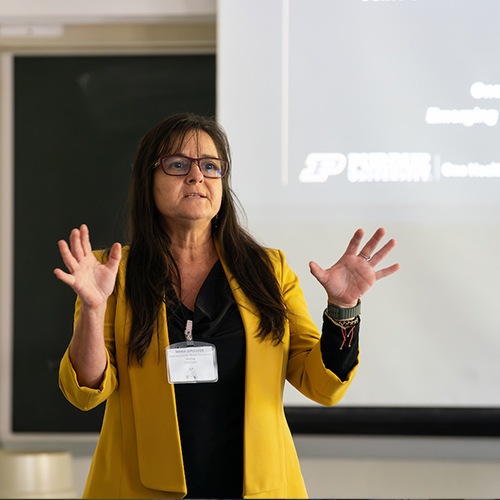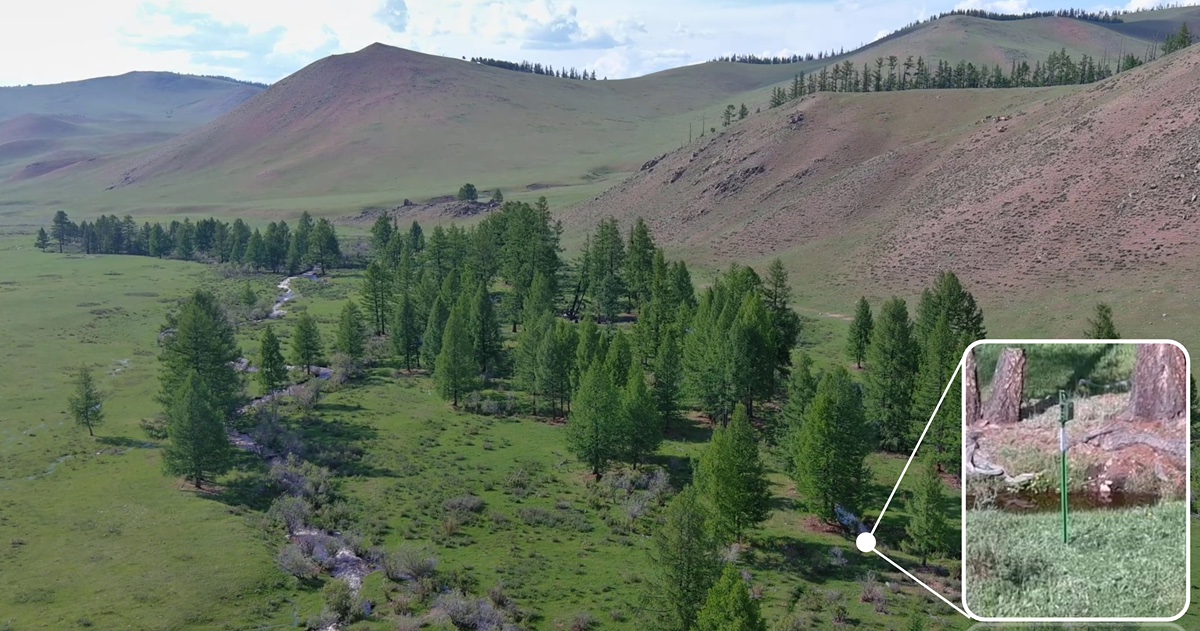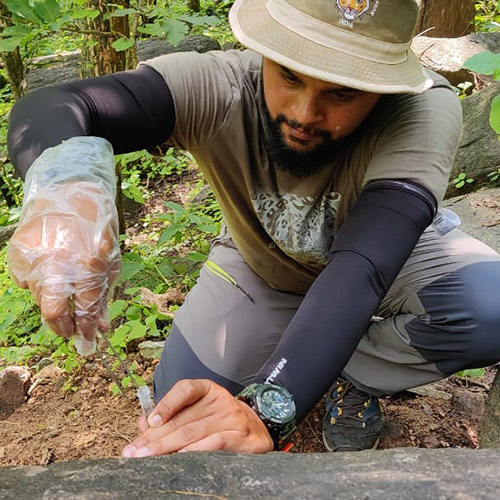Dr. Ken Kellner Named 2024 FNR Outstanding Young Alumni Award Recipient
Jackie Robinson once said “A life is not important except in the impact it has on other lives.”
Dr. Ken Kellner is a prime example of making an impact on the lives and work of others, albeit mostly from the background. He shies away from the spotlight but is an integral part of a wide range of research projects, both through his role in Dr. Jerry Belant’s lab at Michigan State University, and more broadly through his work in the development, maintenance and knowledge-sharing of open-source coding programs for wildlife ecologists.
Kellner, who earned his master’s degree (2012) and PhD (2015) from Purdue and followed with two years as a postdoc in the program, is the 2024 recipient of the Purdue Forestry and Natural Resources’ Outstanding Young Alumni Award, which recognizes the accomplishments of alumni who have excelled in professional and civic accomplishments and have graduated from Purdue FNR within the last 15 years. He has spent his young career working in the fields of population modeling, ecosystem responses to disturbance and mammal conservation. He has published numerous articles on wildlife ecology and biometrics and developed many open-source tools in the R programming language for other scientists to use for reproducible research. FNR’s 2021 Chase S. Osborn Wildlife Conservation Early Career Award recipient literally wrote the book on applied statistical modeling for ecologists using Bayesian statistics, coauthoring a 2024 publication on the topic. Currently a research assistant professor at Michigan State University after a three-year stint as a research scientist at the State University of New York (SUNY) – College of Environmental Science and Forestry, Kellner also has impacted the field of natural resources by working as a reviewer for more than 20 journals.
“I'm humbled and grateful to receive this award from Purdue FNR,” Kellner said. “My advisors, professors, and colleagues at FNR taught me how to be a good scientist. I aim to continue to work hard and make them proud.”
In 2021, FNR documented Kellner’s upbringing and educational journey which led him to the Chase S.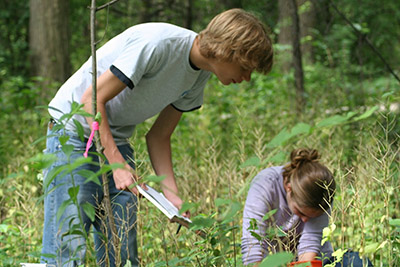 Osborn Wildlife Conservation Early Career Award. Ken shared how he was exposed to nature as the son of two elementary school teachers, about his influential high school biology teacher and many other mentors and also celebrated his research successes.
Osborn Wildlife Conservation Early Career Award. Ken shared how he was exposed to nature as the son of two elementary school teachers, about his influential high school biology teacher and many other mentors and also celebrated his research successes.
As FNR celebrates Kellner’s selection as our 2024 Outstanding Young Alumni honoree, we checked in with him to see what he has been up to since his last award. We also sought out those most impacted by Ken’s work, from his research to his open-source coding to his collaborators and co-authors. Here are a few of their thoughts:
“Vital. Instrumental. I’d be dead in the water without him. Outstanding in all regards. A person of incredible character. He’s a big reason we have the successes and productivity that we have.” – Dr. Jerry Belant, Boone and Crockett Chair in Wildlife Conservation for the Michigan State University Department of Fisheries and Wildlife; Kellner’s researcher supervisor since 2019.
“An amazing mentor. Having Ken as a collaborator has really enabled us to make the techniques we are developing accessible to people. That is one of his real strengths. Ken has really enabled the field to advance because of how accessible he has made the latest and greatest complex statistical techniques and analyses to wildlife professionals. What he does has a worldwide impact that extends beyond ecology.” – Christopher Rota, associate professor of wildlife fisheries resources, under whom Kellner worked as a postdoctoral researcher at West Virginia University in 2018 and with whom Kellner continues to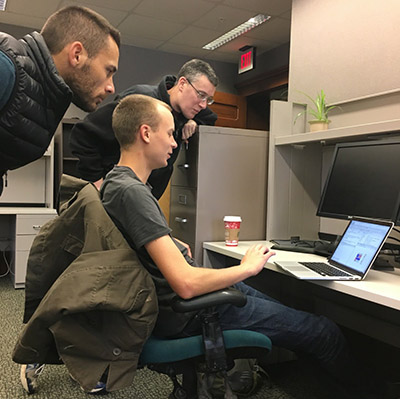 collaborate.
collaborate.
“An amazing wildlife biologist. An amazing coder. He does it all. He is a global instructor. He is there for people in real time. He’s so selfless.” – Richard Chandler, professor of wildlife ecology and management at the University of Georgia’s Warnell School of Forestry and Natural Resources, one of the original developers of the unmarked software package, which Kellner now maintains.
“Ken is one of the fastest, most diligent collaborators I have ever had. He’s very precise, accurate and concise. He’s full of fire about his work. His contribution was very instrumental in making this a great book; he really contributed things that I alone would not have been able to do.” – Marc Kéry, researcher in the population biology department at the Swiss Ornithological Institute, Kellner’s co-author of Applied Statistical Modelling for Ecologists: A Practical Guide to Bayesian and Likelihood Inference Using R, JAGS, NIMBLE, Stand and TMB
In nominating Kellner for the Outstanding Young Alumni Award, FNR professor emeritus Dr. Rob Swihart; Dr. L. Kristin Page, a 2020 Purdue College of Agriculture Distinguished Ag Alumni Award recipient; and current FNR faculty member Dr. Andrew DeWoody echoed those sentiments.
“Ken’s professional contributions have been impressive,” the trio wrote. “He has distinguished himself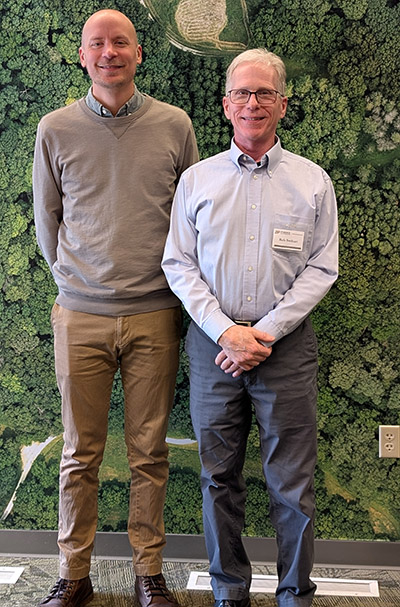 internationally for his work in wildlife ecology and biometrics. His 58 publications and >2100 citations reflect outstanding productivity and impact for someone at his career stage. Equally significant has been his facilitation of increased use of Bayesian statistics by ecologists via his creation of the popular R packages jagsUI and ubms. His published research has advanced our knowledge of 100 species of Indiana wildlife and numerous other species of conservation concern including wolves and bears in the eastern U.S., lions in Tanzania, Darwin’s finches in the Galapagos and herpetofauna in the Himalayas.
internationally for his work in wildlife ecology and biometrics. His 58 publications and >2100 citations reflect outstanding productivity and impact for someone at his career stage. Equally significant has been his facilitation of increased use of Bayesian statistics by ecologists via his creation of the popular R packages jagsUI and ubms. His published research has advanced our knowledge of 100 species of Indiana wildlife and numerous other species of conservation concern including wolves and bears in the eastern U.S., lions in Tanzania, Darwin’s finches in the Galapagos and herpetofauna in the Himalayas.
“Ken is one of the nicest persons we’ve ever met and (he is) an individual of impeccable integrity. Ken’s potential for future professional growth and service is nearly limitless. We believe that Ken Kellner’s record of impactful research and selfless service, coupled with his positive performance trajectory, make him a strong candidate for the 2024 Outstanding Young FNR Alumnus Award.”
Updating Kellner’s Career Journey Since 2021
Kellner began working with Dr. Jerry Belant at SUNY ESF in 2019. In 2022, Belant accepted the Boone and Crockett Distinguished Chair position at Michigan State, and brought Kellner with him.
“Five years ago, I was at ESF working for Jerry in his lab,” Kellner said. “In 2022, he moved the whole lab to Michigan State and he was able to negotiate it to bring me along and give me research faculty status. As part of that I moved from Syracuse to Buffalo where I have family. I’m still working in his lab with his graduate students, largely on large mammal conservation, wolves and moose in mainly the Great Lakes States. I don’t personally go out and do the field work so much anymore, but I provide statistical support to the students that are doing that hard work.”
In addition to the more direct conservation work they had been doing at ESF, research in the Belant lab has shifted to focus more on the impacts of wild harvested game meat, like the influence of venison on wildlife management and human food security.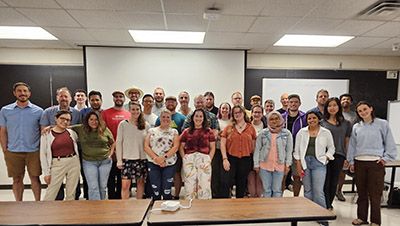
In working with Belant’s graduate students, Kellner takes a more advisory role as they perform their own statistical analyses. He provides advice on possible statistical approaches and feedback on the work they have done. He helps with coding and designing figures and images, etc. The other half of his job is to actually perform the analysis on other projects in the lab and beyond.
“Ken has been instrumental in functioning as an advisor and biometrician, not only with the graduate students, but on all of the research our lab conducts,” Belant said. “He is an amazing mentor for the students and really everyone that he interacts with. Ken is on the committee for and functionally co-advises nearly all of the students, and is just an amazing individual in terms of ensuring the quality and integrity of their work is of the highest standard, but also in making sure that students understand what they are actually doing. He is incredible at ensuring students actually understand the statistics, the assumptions and why you might choose model X or model Y or test Z over test A. He also is an excellent educator and is incredibly good at teaching students in a way that they can understand, retain and, more importantly, apply.”
In working with graduate students, Kellner tries to use his own experiences to help them through a complicated world of statistics.
“I think back to being a graduate student and the statistics were always intimidating to me, because they can be so technical,” Kellner stated. “Honestly, since I was a graduate student, it has only gotten more complicated. The expectations for what they have to know from a statistical perspective and the sophistication of the analysis they are expected to do has increased every year. So, if I am able to offer a little advice and help them throughout that process, I am really glad to do it. When I work with a grad student, at the beginning they are usually very confused; it isn’t making sense and they are really stressed out about it. Then, by the time they graduate, you can tell that they’ve really mastered it and really understand what they are doing. To watch that process, and see some of them become excellent quantitative ecologists in their own right, is cool.”
The projects the Belant lab works on are typically funded by and are collaborations with the Michigan Department of Natural Resources and other agencies and cover a wide range of topics, which Kellner says is “rewarding and challenging” because every project has different assumptions and different limitations of the data that is collected, the different characteristics of the species being studied and the unique analysis required.
“A state, for instance, may need a specific number of how many of some species are out there or maybe they are more concerned with whether the species is more common in forested areas or agricultural areas,” Kellner explained. “Designing the correct analysis to answer those objectives is a challenge every single time, but it is rewarding to constantly be looking at new stuff all the time. I can’t possibly have expertise on all of these different species at once, so I am thankful for my collaborators that they can offer that type of expertise. New and different focal species and different focal topics require slightly different approaches, so I’m always learning new things, which is fun. What I can offer is often just a small contribution to an overall project.”
In addition, Kellner has a separate set of projects which are mainly collaborations with people outside of Michigan State, which tend to be more statistics focused and that lie directly in his personal line of interest.
“One project that I am really proud of that we finished recently, which was not really Jerry’s typical work, was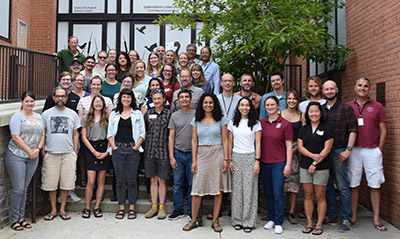 a collaboration with MSU people looking at code functionality in ecology literature,” Kellner shared. “There’s been a push over the last decade or two for published papers to include the data and the code that were used so that, in theory, future authors can try to recreate those results or use that code as a basis for their own work. I was curious about the quality and reliability of those codes, so I ran this project where I downloaded code from hundreds of papers and tried to run it so see if it worked. Then, I analyzed how frequently it works and the kinds of improvements we can make to get it to work more often. What I found was actually pretty shocking. Only 7% of ecology papers in my sample had code that functioned. Only a quarter of papers shared code, but of those that did share it, most of it didn’t work. It is worrisome that the code was not ever checked before publication. Oftentimes it was a relatively small thing that was incorrect that could be fixed relatively easily, but we shouldn’t have to do that. Ecologists are not software developers, but I thought it was something worth bringing attention to. In addition to reporting these statistics, we tried to make some suggestions about easy, minor things that journals and authors could do to improve this over time.”
a collaboration with MSU people looking at code functionality in ecology literature,” Kellner shared. “There’s been a push over the last decade or two for published papers to include the data and the code that were used so that, in theory, future authors can try to recreate those results or use that code as a basis for their own work. I was curious about the quality and reliability of those codes, so I ran this project where I downloaded code from hundreds of papers and tried to run it so see if it worked. Then, I analyzed how frequently it works and the kinds of improvements we can make to get it to work more often. What I found was actually pretty shocking. Only 7% of ecology papers in my sample had code that functioned. Only a quarter of papers shared code, but of those that did share it, most of it didn’t work. It is worrisome that the code was not ever checked before publication. Oftentimes it was a relatively small thing that was incorrect that could be fixed relatively easily, but we shouldn’t have to do that. Ecologists are not software developers, but I thought it was something worth bringing attention to. In addition to reporting these statistics, we tried to make some suggestions about easy, minor things that journals and authors could do to improve this over time.”
The paper “Functional R Code is Rare in Species Distribution and Abundance Papers,” co-authored by Kellner, Belant and former MSU postdoc Jeffrey Doser, was published in Ecology and Kellner also presented on the topic at The Wildlife Society meetings in October 2024.
“Much of Ken’s work is so valuable to the broader community, but it might be underappreciated because so much of it is behind the scenes,” Belant said. “Within our lab, he has elevated the quantitative capabilities of everyone in our programs to new levels and has elevated our ability to comprehend and understand science through this background work. We are so fortunate to have the opportunity to work with him and have him be part of our group. We would definitely not be where we are as a group without him. He is a true collaborator and a brilliant scientist. He has had a profound positive influence on ecologists and biometricians around the world, but he often doesn’t get the credit that he deserves. I cannot think of a person more deserving of this award than Ken.”
Unlocking Open-Source Coding
Kellner is more than qualified to give advice to his various students and collaborators on how to use R, Jags and other code as he creates and maintains several open-source statistical packages.
“I like to work in the background and help other people achieve their research goals, so maintaining software is the quintessential example of that,” Kellner shared. “I very often have no idea what people are using it for exactly, then I get emails asking for help. I’m happy to contribute a tiny bit to all of these different projects. I feel like that probably the overall biggest impact I can have, given my skill set, is to maintain these packages, add new features and make them as accessible as I can. It isn’t just writing a package and making it publicly available, it is writing it in such a way that the average ecologist can interact with it easily. I spend a lot of time thinking about which features would be the most helpful and how I can design it to be as easy to use as possible. It is satisfying to see the impact and get feedback from people when I get it.”
Since 2019, he has maintained the unmarked package, which is widely used for modeling abundance and distribution of species and is downloaded 300 times a day. He also maintains a listserv of constant emails about how to use the package. He also adds new types of analyses, models and features to the package regularly, including some that help with experimental design considerations.
Richard Chandler, who maintained the package following its initial creation by Ian Fiske, first encountered Kellner as a user of unmarked and eventually realized Kellner could provide a future for it that he could not.
“I think Ken started working with unmarked out of his own interest and started contributing to the email listserv where people ask questions and eventually, he started contributing his own code,” Chandler shared. “Slowly I started to realize that he really knew his stuff and was an amazing coder and also an amazing wildlife biologist. It happened organically after that. After starting my position at UGA in 2013, I became too busy to do anything else with unmarked, so it sat there three or four years languishing without any development. Around that time, Ken stepped in and started contributing more. Soon enough, he brought it back to life and has really turned it into something that is vibrant again and being actively developed with new users, new methods and tools and new functionality. It brings me great joy and I am very happy that Ken has stepped in and given it new legs.
“Ken stays on the cutting edge and he learns new methods and techniques at such a fast rate, it is really hard to predict how far he is going to take it. I don’t know how he pulls it all off. Unmarked is just one of the projects he works on. He also has developed a Bayesian version of these models, the Ubms package. He knows that people need these tools and that the science and conservation of it all is improved when these tools are available. He is a really humble guy and he really does it for the good of the whole scientific community. He is happy to sit back out of the spotlight and just do his thing, but it is good to give him this type of recognition, which he really deserves.”
And Kellner is not even close to finished making his impact through open-source software packages.
“I’m hoping to continue to work on it into the future and I have lots of ideas and some potential collaborators that I’m working with to add new models and features going forward,” Kellner said. “I just published a paper with other unmarked collaborators that gave an overview of the changes in the package over the last 12 years and what is supported and what isn’t. I also get a lot of emails from people asking for a specific model or from authors developing new methods and I end up collaborating with them to implement things into the software version in real time, so it can have a broader reach immediately.”
Kellner also has collaborated with Perry De Valpine and Chris Paciorek on an R-package called NIMBLE, which is well-known for Bayesian analysis usage.
“I’ve always considered the guys working on NIMBLE to be super smart experts, professional software developed types, so I am very happy to be learning from them and adding some functionality,” Kellner shared. “It has been hugely rewarding to work with and learn from them and contribute to NIMBLE, which is often used by ecologists, but also in other fields.”
Writing the Book on Applied Statistical Modeling
Another major project occupying Kellner’s time the last few years is the book, “Applied Statistical Modeling for Ecologists,” which he co-authored with Marc Kéry. A sequel to Kéry’s 2010 publication Introduction to WinBUGS for Ecologists the book aims to help scientists who are beginning to work in statistical modeling get a grasp on the most important basic analysis concepts. It describes them conceptually and then provides hands-on code for how to implement the analysis in several different types of software. While Kéry’s original book covers WinBUGS, the new edition includes R, Jags, Nimble, Stan, TMB and a few other tools.
Kéry had become familiar with Kellner’s work through various publications as well as through his involvement with the unmarked software package and related email listservs.
“Ken appeared on my radar very early as a young, eager scientist working with different software packages and showing up in various papers I read,” Kéry said. “Ken has a very deep understanding of statistics and computation for an ecologist. In many ways, his understanding goes deeper than mine coming from his work over several years with the software unmarked, which really lets him look into the belly of these models. When I initially set out to write the book and translate many of these models into different software languages, I called Ken to ask for help. After I had done that a few times, it dawned on me that Ken would actually be an ideal collaborator on this. His contribution was very beneficial and instrumental in making this book great.”
Kellner has high hopes that this book can impact future generations of ecologists like Kéry’s original book did for him.
“The previous version was used as a textbook,” Kellner explained. “I encountered it in Rob Swihart’s quantitative statistics class. Hopefully this will get adopted in those same classes and more because it covers the software people are using now. The intention was to make it a textbook and we have a whole section of suggestions for professors on how to use it that way. It also is written in a very applied way. I think the ideal way to use it is to have the book open next to an open R session where you can just enter the code from the book as you work through it. It’s not super mathematically dense. It really is meant for applied ecologists.”
Whether it is for his work mentoring graduate students or providing code and troubleshooting for complete strangers or his own research, it is clear that Kellner is just getting started. The sky is the limit for the impact this Outstanding Young Alumni can have.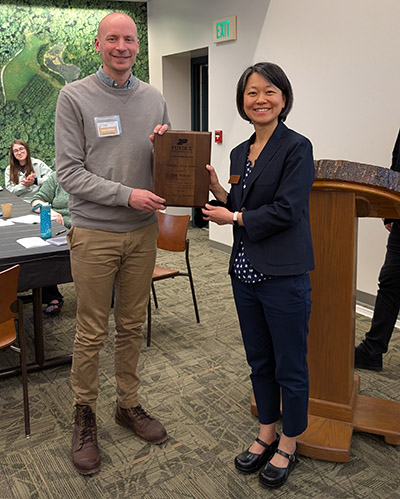
“I’m totally happy with my job; I don’t necessarily want a lot of attention personally,” Kellner said. “Getting feedback from the people I collaborate with saying that I enabled them to achieve their goal is all I can ask for. I would rather have that than any other type of recognition. I am thankful to Jerry (Belant) for putting me in a pretty unique situation where I can do lots of work with him but also work with so many others. He has supercharged the success that I’ve had over the last five years and I am really thankful to him for my more recent career success.
“I am very humbled to have been nominated for this award by Kirsten Page, Rob Swihart and Andrew DeWoody. I worked with Kristen all the way back in my time at Wheaton as an undergrad, then with Rob in graduate school. I worked with Andrew later. Their feedback is definitely important to me. I am incredibly thankful for what they have done for me and very happy that I’ve been able to work with them in such a way that they would think I deserve an award like this.”




